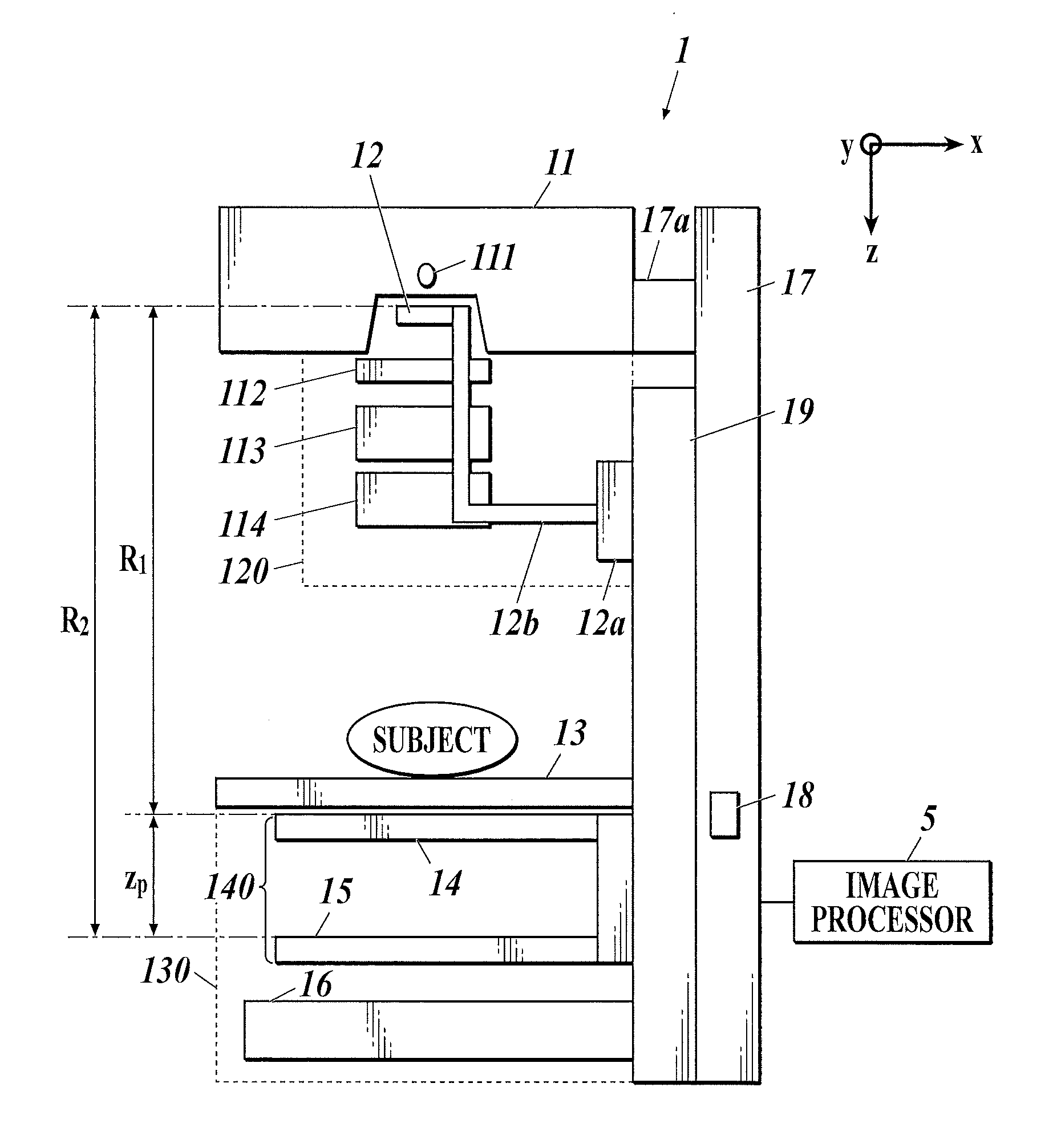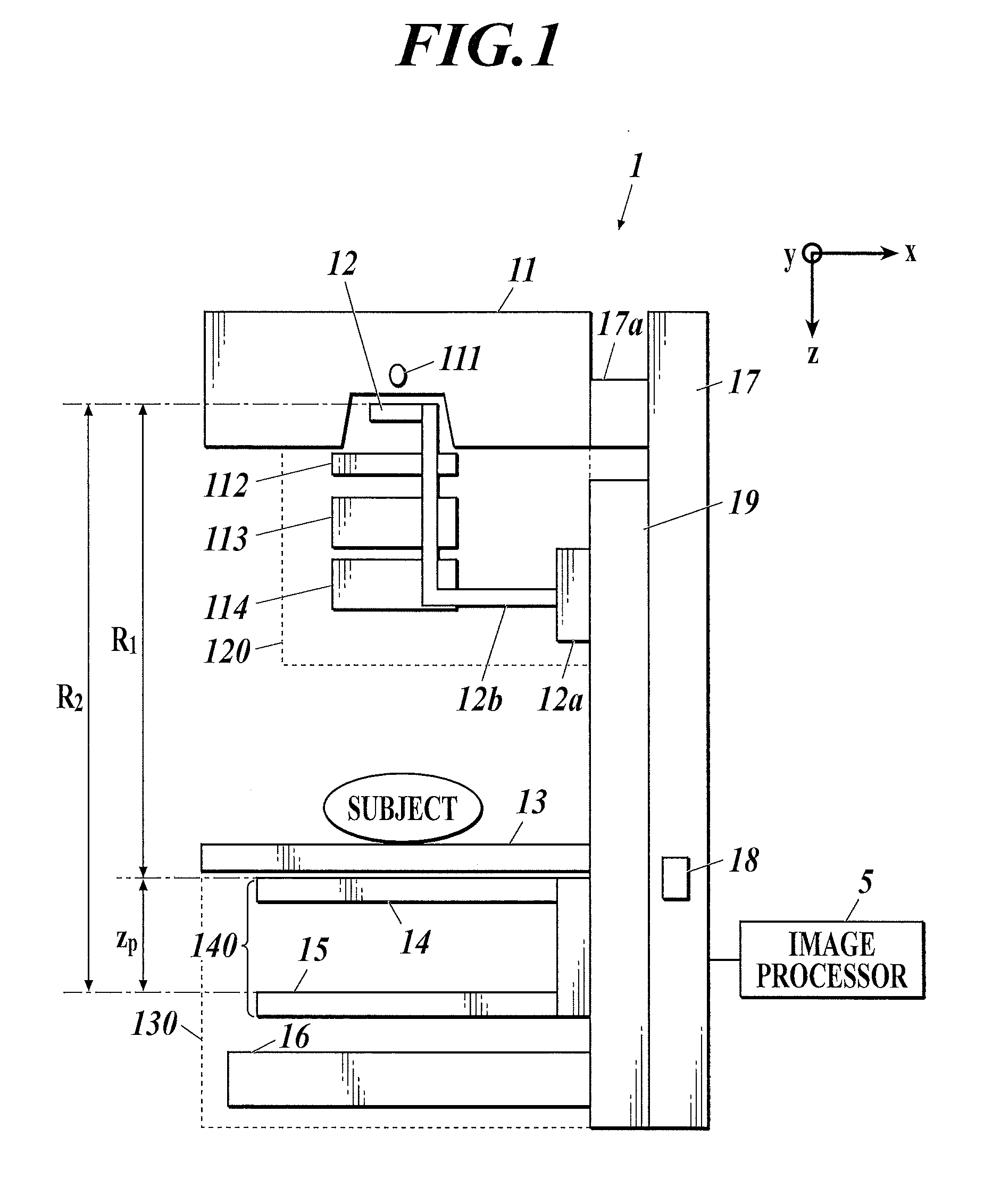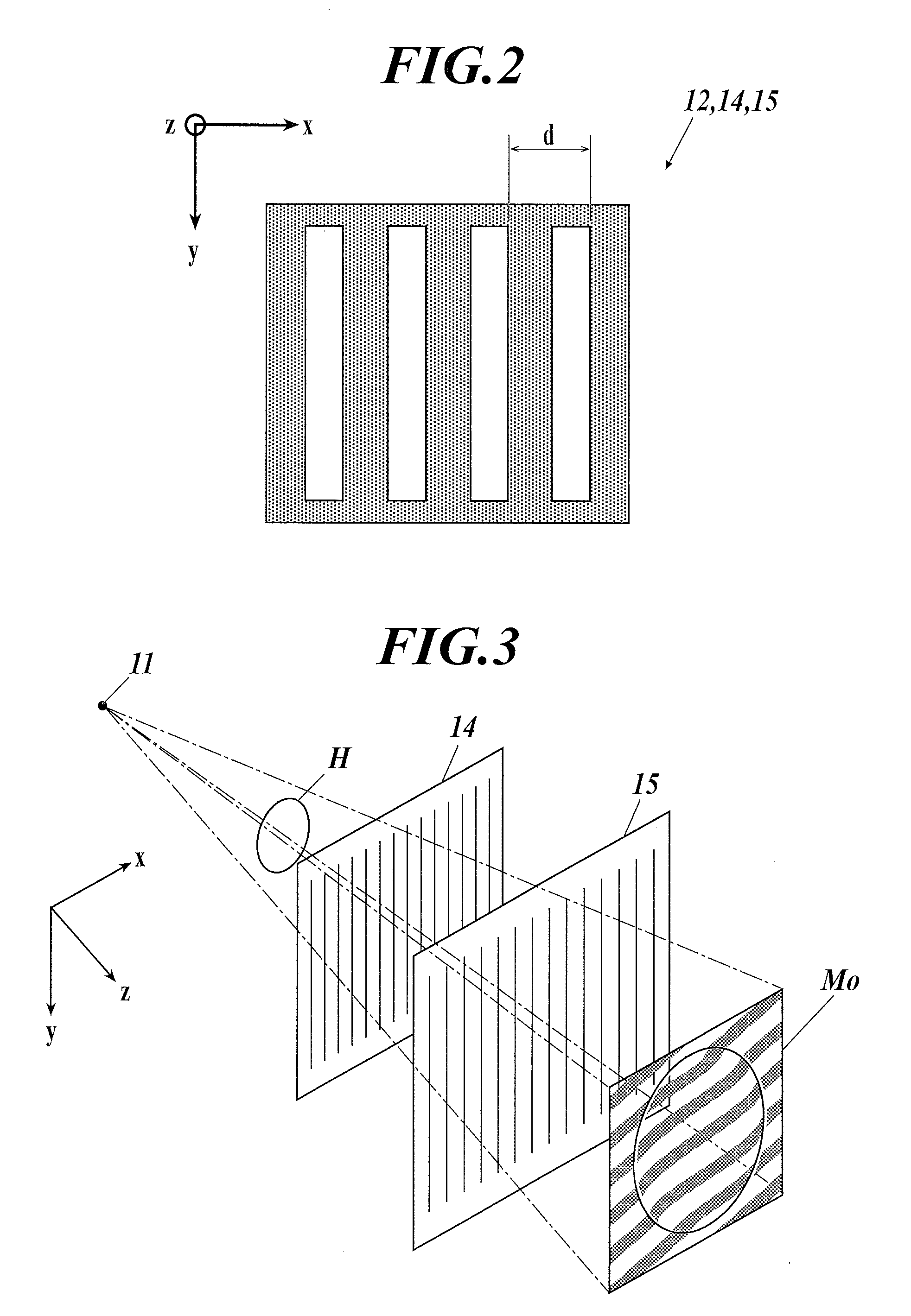Medical imaging system
a medical imaging and imaging system technology, applied in the field of medical imaging systems, can solve the problems of patient's joint cartilage, high-cost apparatus, difficult to capture x-ray absorption images, etc., and achieve the effect of accurately measuring the thickness or other quantitative features of joint cartilag
- Summary
- Abstract
- Description
- Claims
- Application Information
AI Technical Summary
Benefits of technology
Problems solved by technology
Method used
Image
Examples
example 1
[0092]Examples of the quantitatively measured features of joint cartilage include the distance R (see FIG. 8) between the edge A of the detected cartilage and the edge B of the bone in the joint specified in the differential phase image as described above.
[0093]If the location at which the distance R is measured in the joint varies at every imaging, continuous monitoring of changes in distance R cannot be achieved, preventing the observation of the degree of abrasion and other abrasion states of cartilage. The location at which the distance R is measured can be kept at a given location in the joint in the following manner, for example.
[0094]As described above, if the cross section of the edge B of the bone in the joint does not have an arc-shaped edge, the joint cannot be bent smoothly. The cross section therefore partly has a substantially arc-shape edge in many cases. For this reason, a portion that can be relatively accurately approximated by an arc shape (the shaded portion in t...
modification 1
[Modification 1]
[0100]Although not shown in the drawing, the image processor 5 in Example 1 may include a display unit to display images, and input unit, such as a keyboard and a mouse, through which an operator, for example, a radiological technologist inputs instructions. The display unit shows a differential phase image, a line L, and the like. For instance, the distance R (i.e., the thickness) of cartilage on the line L input by the operator via the input unit may be calculated.
example 2
[0101]Instead of or in addition to the calculation of only one distance R of the cartilage in the area corresponding to the portion (i.e., distance R of the cartilage at the center of an arc-shaped portion, which is particularly prone to abrasion) as in Example 1, the process may calculate at least one of the maximum Rmax, the minimum Rmin, the difference ΔR between the maximum and the minimum, and the average Rave of the distance R at least in the area corresponding to a portion of the joint which can be approximated by an arc shape.
[0102]For instance, in FIG. 8, the line L is rotated about the center C within the range corresponding to the portion that can be approximated by an arc shape (the shaded portion in the drawing). While the line L is being rotated, the distance R (i.e., thickness) of the cartilage is calculated in the above-described manner. The maximum Rmax, the minimum Rmin, the difference ΔR between the maximum and the minimum, and / or the average Rave of the distance ...
PUM
 Login to View More
Login to View More Abstract
Description
Claims
Application Information
 Login to View More
Login to View More - R&D
- Intellectual Property
- Life Sciences
- Materials
- Tech Scout
- Unparalleled Data Quality
- Higher Quality Content
- 60% Fewer Hallucinations
Browse by: Latest US Patents, China's latest patents, Technical Efficacy Thesaurus, Application Domain, Technology Topic, Popular Technical Reports.
© 2025 PatSnap. All rights reserved.Legal|Privacy policy|Modern Slavery Act Transparency Statement|Sitemap|About US| Contact US: help@patsnap.com



